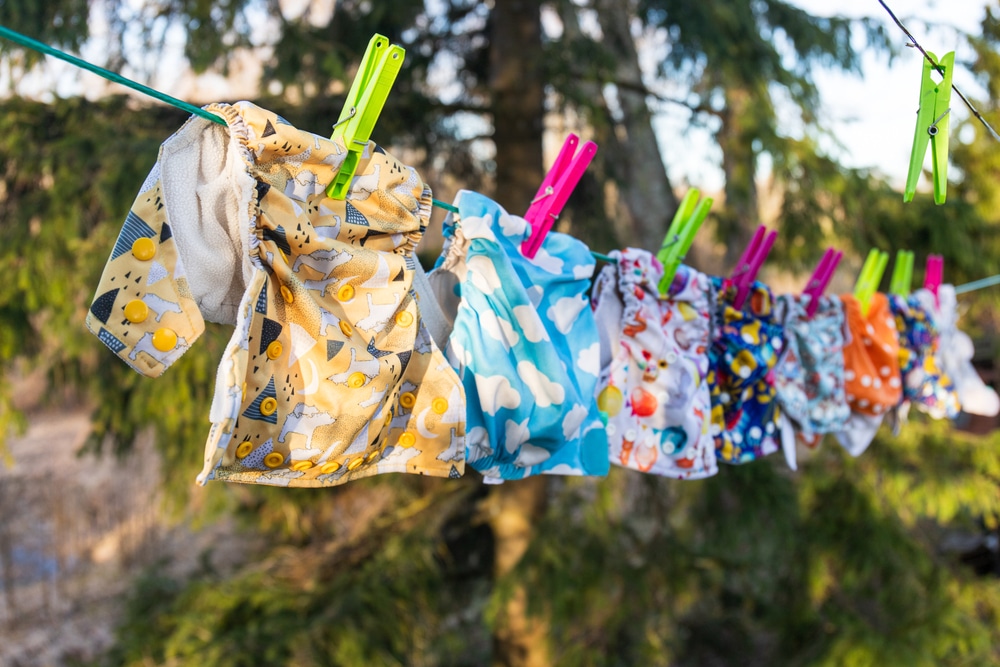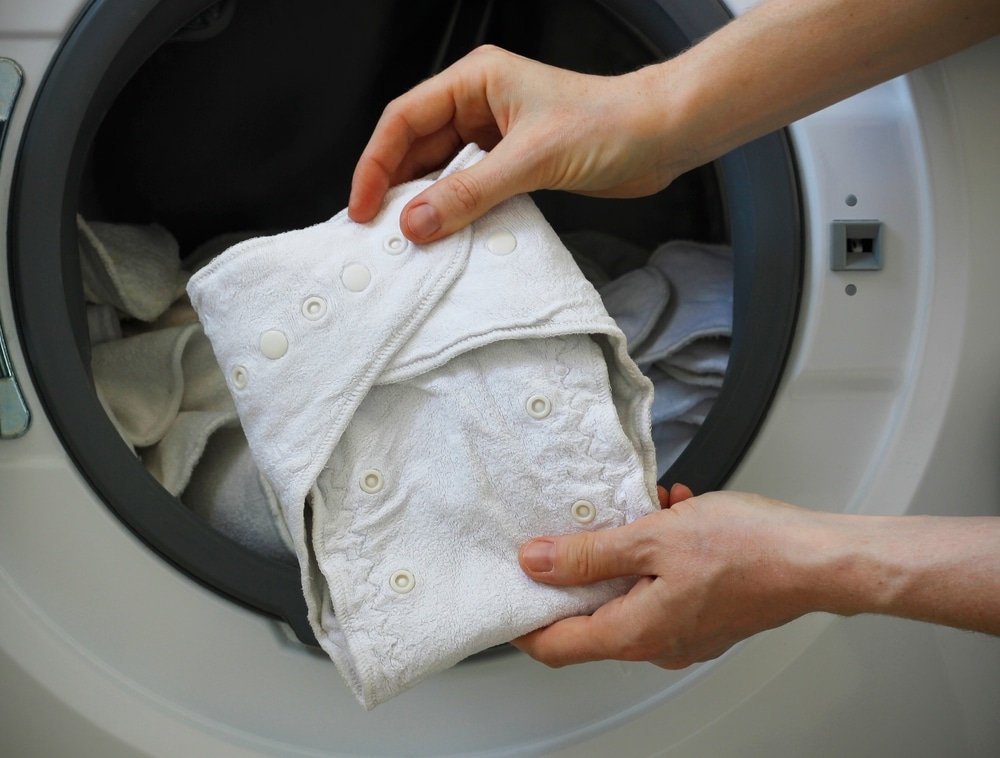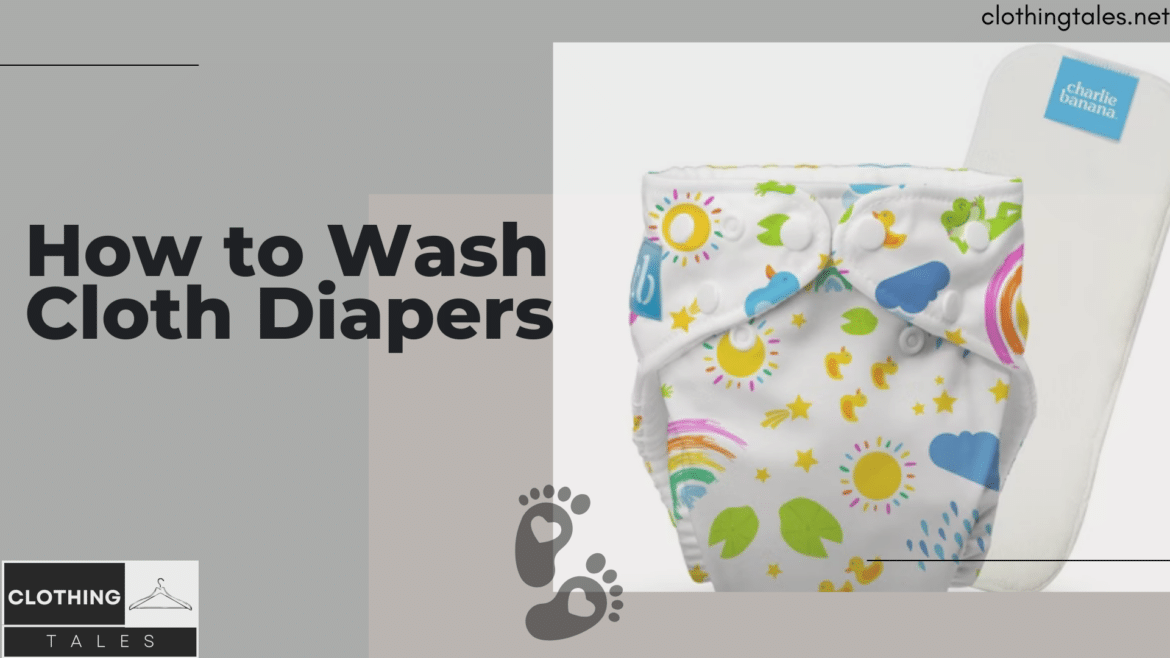Table of Contents
In a world where environmental consciousness and cost-saving measures are becoming increasingly important, cloth diapers have emerged as a popular alternative to disposable ones. Not only are they eco-friendly and economical, but they also offer a customizable and comfortable option for your baby. However, for many parents, the idea of washing cloth diapers can seem daunting. Proper care and maintenance are essential to ensure that these diapers remain hygienic, absorbent, and gentle on your baby’s sensitive skin. In this simple guide, we’ll break down the process to wash cloth diapers into easy-to-follow steps, offering practical tips and tricks to make the task as straightforward and effective as possible. Whether you’re a seasoned cloth diaper user or just starting your journey, this guide will help you keep your diapers clean and in top condition with minimal hassle.

Step 1 – Preparation is Key
Before you start by wash cloth diapers, it’s essential to have the right tools and a washing routine in place. You’ll need a diaper pail to store dirty diapers, a diaper sprayer to remove solids, a good laundry detergent that’s free from harsh chemicals, and a wet bag for storing soiled diapers when you’re on the go.
Dirty Diapers: Start by removing any solid waste from the dirty diapers. You can use a diaper sprayer attached to your toilet to spray off the solids directly into the toilet. This step helps prevent stains and reduces the odor in your diaper pail.
Pre-Rinse: Once the solids are removed, place the diapers into the diaper pail until you’re ready to wash them. If you’re wondering how to clean cloth diapers, the first step is always a pre rinse. This helps to remove any lingering waste and prepares the diapers for a thorough clean.
Step 2 – Setting Up the Washing Machine
When it’s time to wash the diapers, you’ll need to follow a specific washing cycle in your washing machine. Here’s a detailed look at how to wash cloth diapers:
Cold Water Rinse Cycle: Start with a cold water rinse cycle without detergent. This helps to rinse out any remaining waste and prevents stains from setting. A pre rinse with cold water is crucial to the washing routine as it prepares the diapers for a more thorough wash.
Hot Water Wash Cycle: After the cold water rinse, run a hot water washing cycle with your laundry detergent. Hot water helps to kill any bacteria and gives the diapers a deep clean. Make sure to choose a laundry detergent that is safe for cloth diapers, meaning it should be free of fabric softeners, fragrances, and additives that can cause buildup and reduce the absorbency of the diapers.
Extra Rinse: To ensure that all detergent residue is removed, run an extra rinse cycle. This step is vital because any leftover detergent can irritate your baby’s skin and affect the diaper’s performance. 
Step 3 – Dealing with Stubborn Odors and Stains
Sometimes, you may encounter stubborn stains or odors that won’t come out with a regular wash. Here’s how to handle them:
Baking Soda: Adding a half cup of baking soda to the washing machine during the hot water wash can help neutralize odors and lift stains. Baking soda is a natural deodorizer and a mild abrasive that can enhance your cloth diaper care routine.
Water Soluble Boosters: If you’re still struggling with stains, consider using water soluble stain removers that are safe for cloth diapers. Avoid using bleach or harsh chemicals, as these can damage the fabric and reduce the diaper’s lifespan.
Step 4 – Drying Cloth Diapers
Once your diapers are clean, it’s time to dry them properly. Drying cloth diapers can be done in several ways:
Line Dry: The best way to dry cloth diapers is to line dry them in the sun. Sunlight naturally bleaches and sanitizes the fabric, helping to remove any remaining stains and leaving your diapers fresh. Line drying also helps to preserve the integrity of the diaper fabric, extending its life.
Drying in the Dryer: If line drying is not an option, you can use a dryer on a low-heat setting. Avoid using fabric softeners or dryer sheets, as these can coat the fabric and reduce the diaper’s absorbency. Drying cloth diapers in the dryer is faster, but be sure to check the manufacturer’s instructions to ensure it’s safe for your specific type of diaper. 
Step 5 – Cloth Diaper Care and Maintenance
Proper cloth diaper care involves more than just laundering cloth diapers. Here are some tips to keep your diapers in the best condition:
Washing Routine: Establishing a consistent washing routine is key. Aim to wash your diapers every 2-3 days to prevent the buildup of bacteria and stains. This will also help to keep your diapers smelling fresh and ensure they are always ready for use.
Wet Bag: Use a wet bag to store soiled diapers when you’re out and about. A wet bag is waterproof and helps to contain odors until you can get the diapers home for washing.
Diaper Sprayer: Investing in a diaper sprayer can make cleaning dirty diapers much easier. It allows you to remove solids quickly and efficiently, reducing the need for multiple rinse cycles.
Fabric Softeners: Avoid using fabric softeners or any product that can leave a residue on the diapers. Fabric softeners can coat the diaper fabric, leading to reduced absorbency and potential leaks.
Conclusion
Learning how to wash cloth diapers may seem daunting at first, but with the right tools and a consistent washing routine, it becomes second nature. Remember, the key to successful cloth diaper care is regular washing, proper storage, and addressing any issues promptly. Whether you’re washing reusable diapers or looking for tips on how to clean cloth diapers, this guide has you covered. By following these steps, you’ll ensure that your cloth diapers remain clean, fresh, and ready to keep your baby comfortable day after day.
